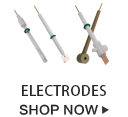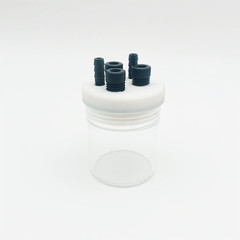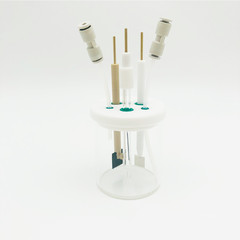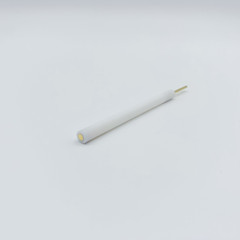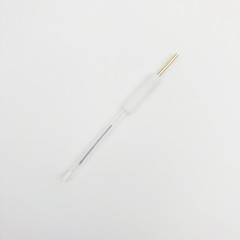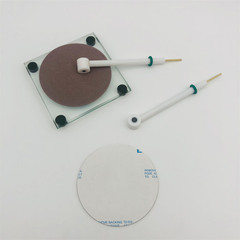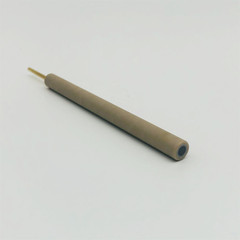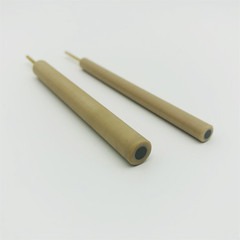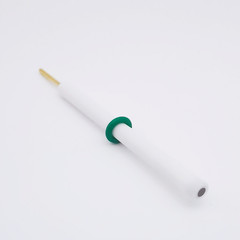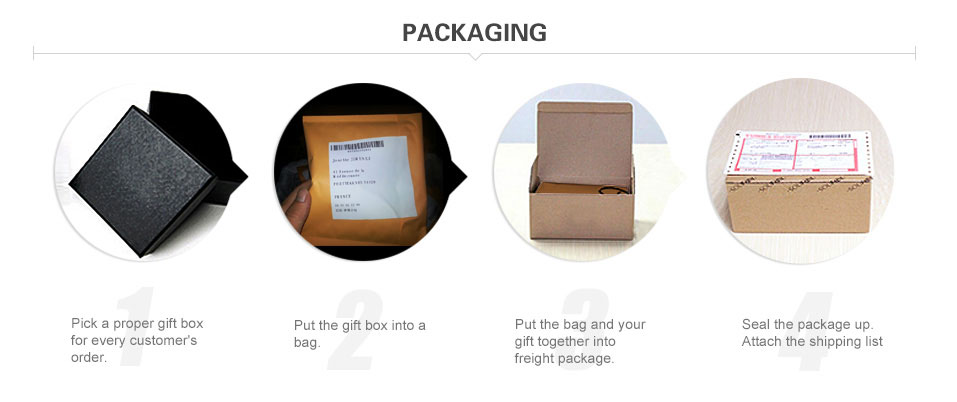Product Details
Platinum is an inert metal and does not participate in the electrode reaction itself, so it is the first choice for the counter electrode. One of the important parameters of the counter electrode is its surface area. The counter electrode must have a large enough area to support the current conduction generated on the working electrode. Platinum electrodes include platinum sheet electrodes, platinum wire electrodes, and platinum mesh electrodes.
The area of the platinum mesh electrode is smaller than platinum sheet electrode, and it is also suitable for use in combination with large-size sheet-shaped working electrode materials. There are two types of platinum mesh electrodes. Through a special customized process, a platinum mesh counter electrode with a PTFE insulated rod can be made into an integrated platinum mesh counter electrode. The platinum mesh can also be clamped by a replaceable electrode clamp as a counter electrode. At the same time, in some spectral photoelectrocatalytic reactions, platinum mesh is more suitable as a counter electrode because of its porous network structure.
As the working electrode undergoes an oxidation or reduction reaction, a gas evolution reaction or a reverse reaction of the working electrode reaction may occur on the counter electrode. Therefore, in some cases it is necessary to separate the working electrode from the counter electrode. The best way to reduce the interference of the reaction on the counter electrode on the working electrode is to use sintered glass, porous ceramics or ion exchange membranes to isolate the solution in the two electrode regions.
Specification:
electrode material: Platinum 99.95%
mesh count: 52
mesh wire diameter: 120 µm
connection wire diameter: 500 µm
body material:PTFE
body diameter: 6mm
body length: 80mm
Product Includes: 1 * platinum gauze electrode with gold-plated pin 1 * fluorine rubber O-ring
NEED HELP? CONTACT US
Call Toll-Free +1 (800) 972-7086
Email Us:
- Shipping
- Standard Shipping: 5-7 Business days
- DHL/Fedex Express Shipping: 2-5 Business days
PAYMENT
PRODUCT SHOW
Here are some photos, you can find the details from them, if you need more information, you can talk with us, we have many experts in dekresearch, and we are very happy to give you some support in your items!
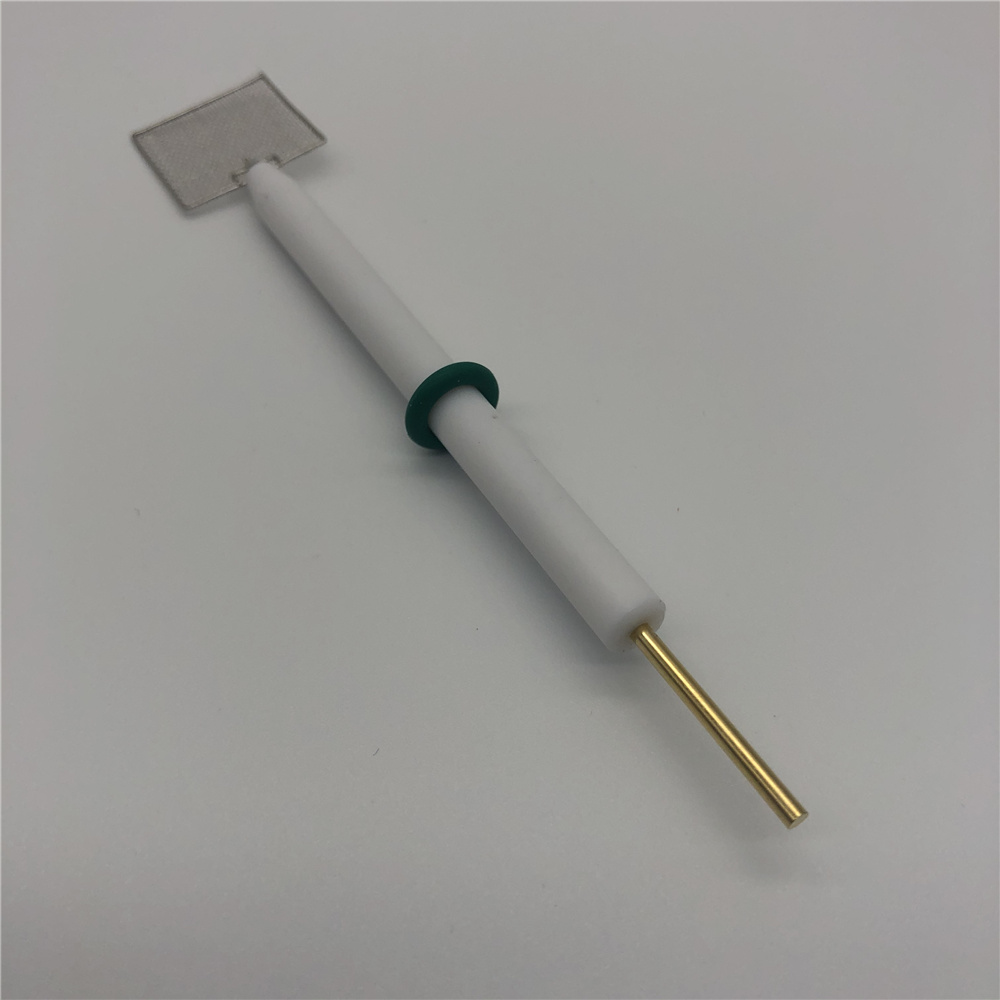

We devotes itself to providing laboratory instrumentation that enables simultaneous in-situ measurements of a number of signals (electrochemical, optical, thermal and other) on thin film and membrane materials. we have already gained so much experience in the field of electrochemical trading and our final goal is to offer our customers various kinds of laboratory instrumentation and at best price. We are gradually becoming one of the top instrumentation online shop throughout the world and we do hope we could make you outstanding by providing the real good stuff you want. Enjoy your shopping with us and have a nice day.
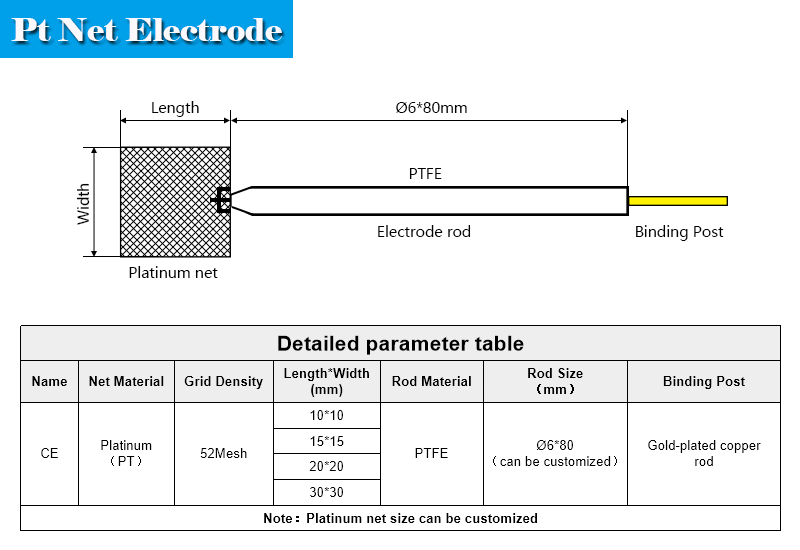

 United States (USD)
United States (USD) United Kingdom (GBP)
United Kingdom (GBP) Canada (CAD)
Canada (CAD) Australia (AUD)
Australia (AUD) Singapore (SGD)
Singapore (SGD) Ireland (EUR)
Ireland (EUR) India (INR)
India (INR)
